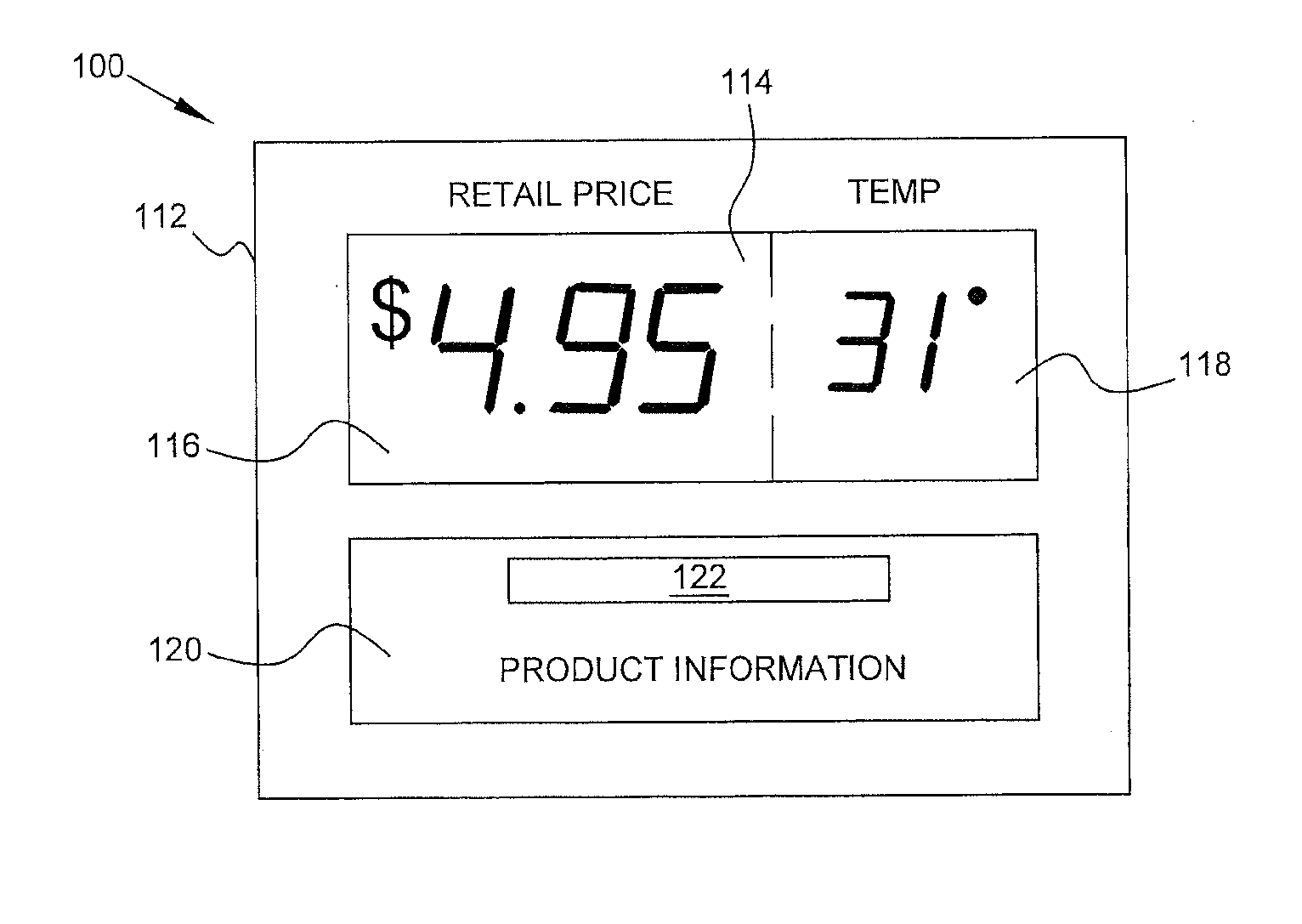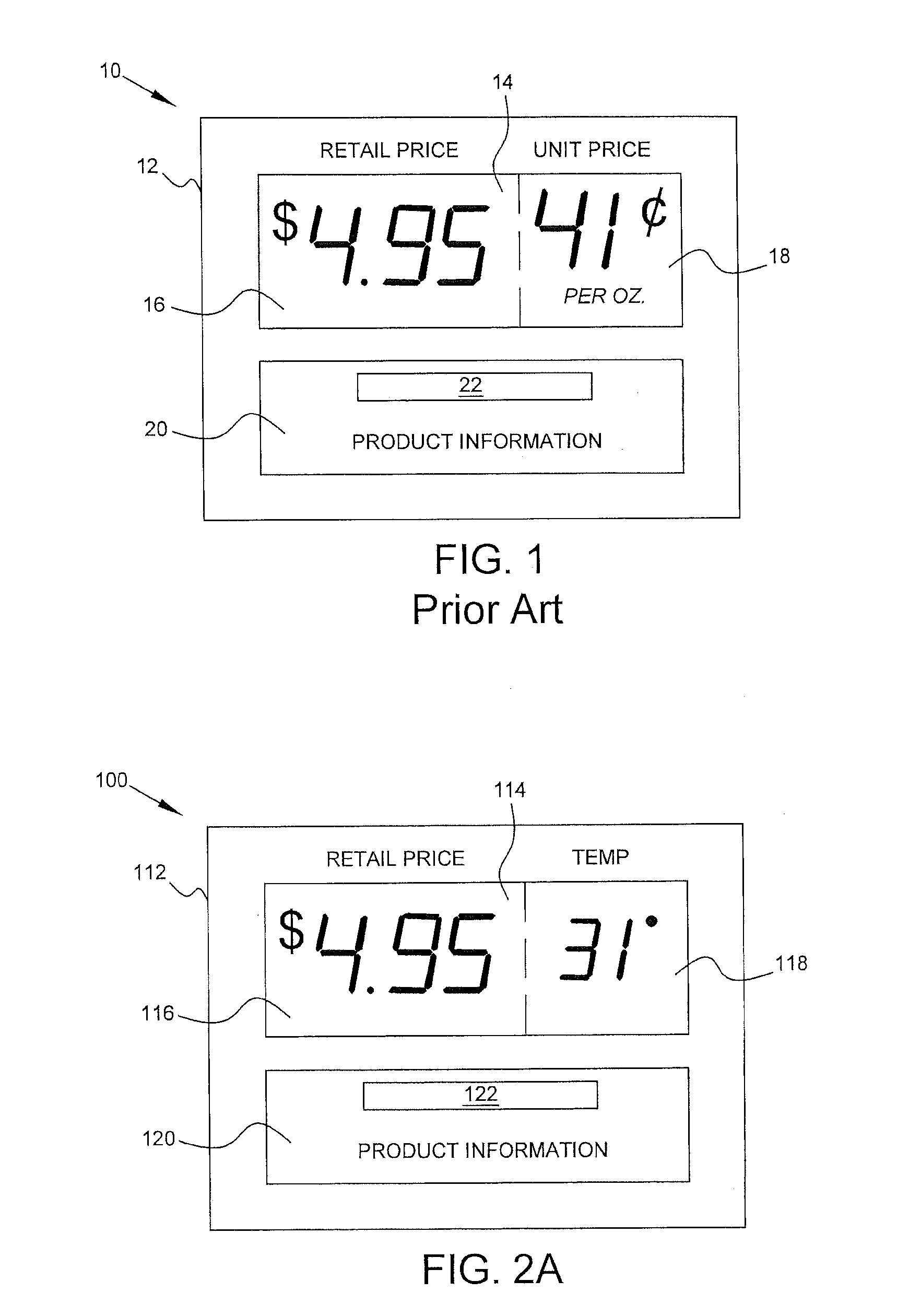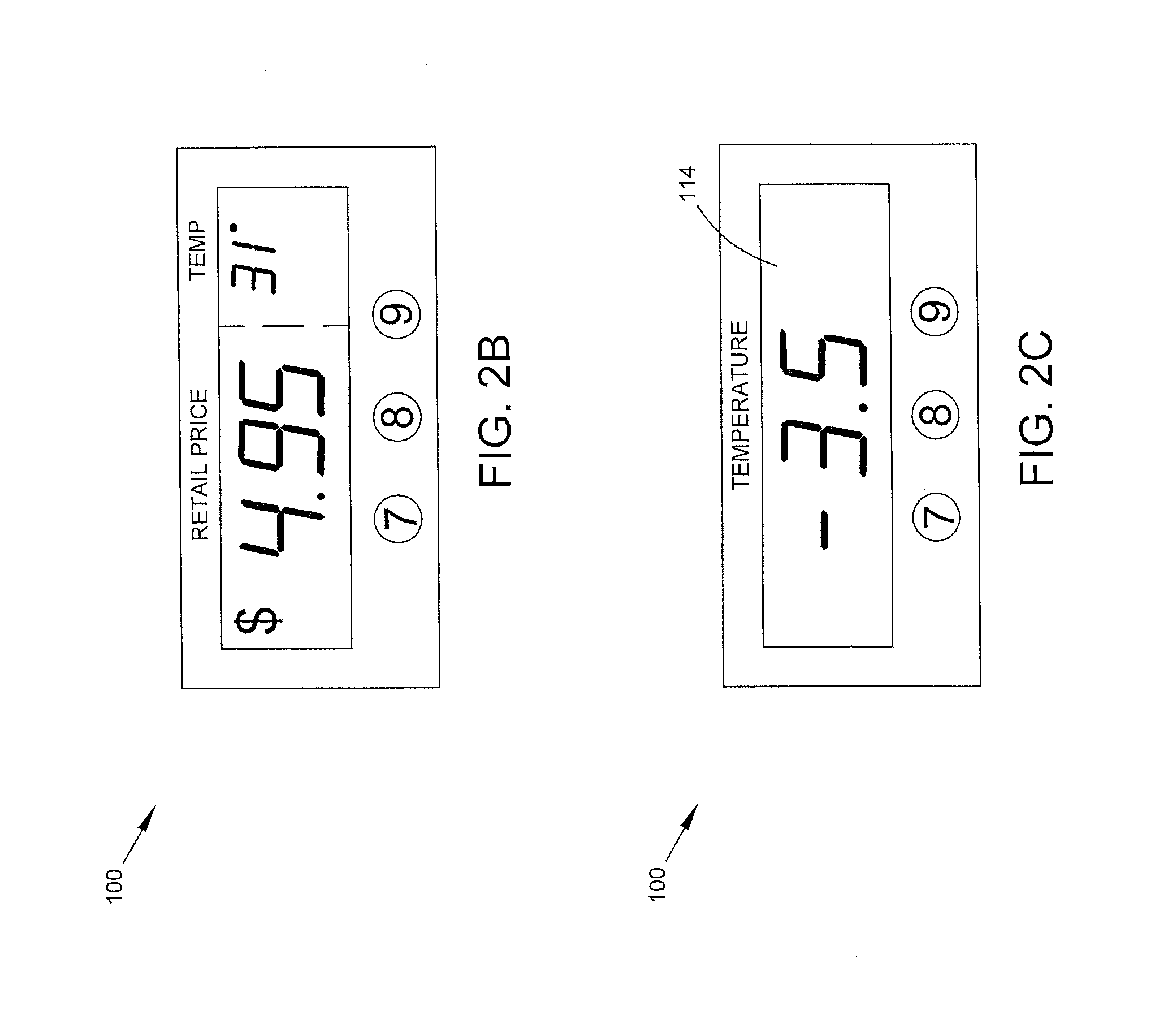Temperature sensor for retail environments
a temperature sensor and retail environment technology, applied in the field of temperature monitoring, can solve the problems of economic loss, threat to disrupt customer loyalty, and drawbacks of each of these sensors
- Summary
- Abstract
- Description
- Claims
- Application Information
AI Technical Summary
Benefits of technology
Problems solved by technology
Method used
Image
Examples
third embodiment
[0026]In an ESL 100, shown in FIG. 2C, display 114 displays a temperature. This illustrated embodiment also includes a first indicator light 7, second indicator light 8, and third indicator light 9.
fourth embodiment
[0027]In an ESL 100, shown in FIG. 2D, display 114 comprises primary display area 116, secondary display area 118, and tertiary display area 121. In some embodiments, primary display area 116 is disposed above secondary display area 118 and tertiary display area 121. The three display areas of display 114 are capable of numerous configurations to display various parameters, as detailed in Table 1 below. In some embodiments, ESL 100 further comprises first indicator light 7, second indicator light 8, and third indicator light 9.
TABLE 1Display ConfigurationsPrimary Display AreaSecondary Display AreaTertiary Display AreaRetail PriceUnit PriceBlankSale PriceUnit PriceRegular PriceSale PriceUnit PriceSavingsTemperatureBlankBlankRetail PriceUnit PriceTemperatureSale PriceUnit PriceTemperatureRetail PriceSet TemperatureActual TemperatureActual TemperatureLow Range set pointHigh Range set point
[0028]In still further embodiments, an ESL 100 is programmed to display retail price and temperatu...
PUM
 Login to View More
Login to View More Abstract
Description
Claims
Application Information
 Login to View More
Login to View More - R&D
- Intellectual Property
- Life Sciences
- Materials
- Tech Scout
- Unparalleled Data Quality
- Higher Quality Content
- 60% Fewer Hallucinations
Browse by: Latest US Patents, China's latest patents, Technical Efficacy Thesaurus, Application Domain, Technology Topic, Popular Technical Reports.
© 2025 PatSnap. All rights reserved.Legal|Privacy policy|Modern Slavery Act Transparency Statement|Sitemap|About US| Contact US: help@patsnap.com



